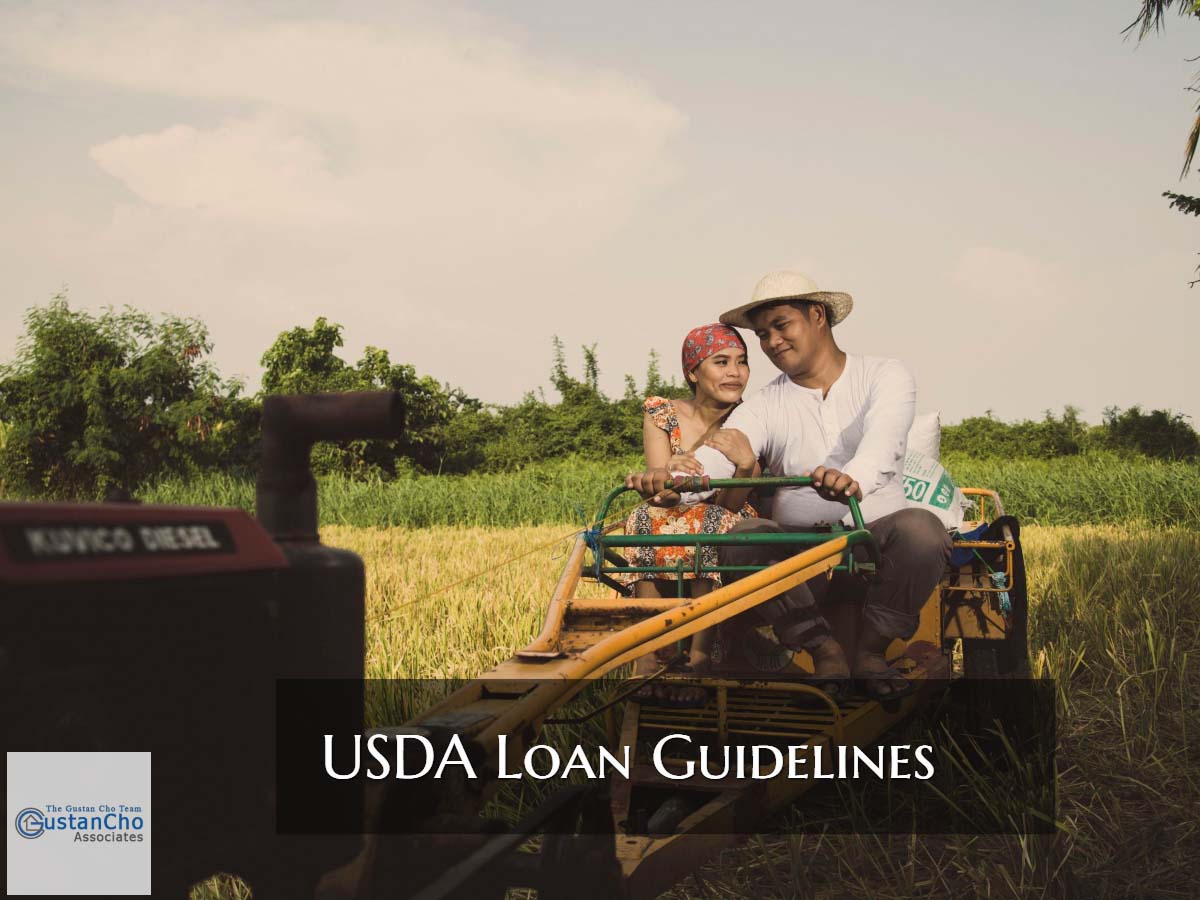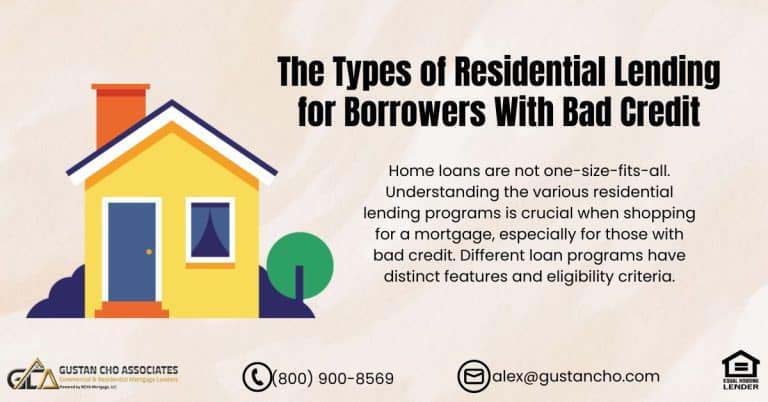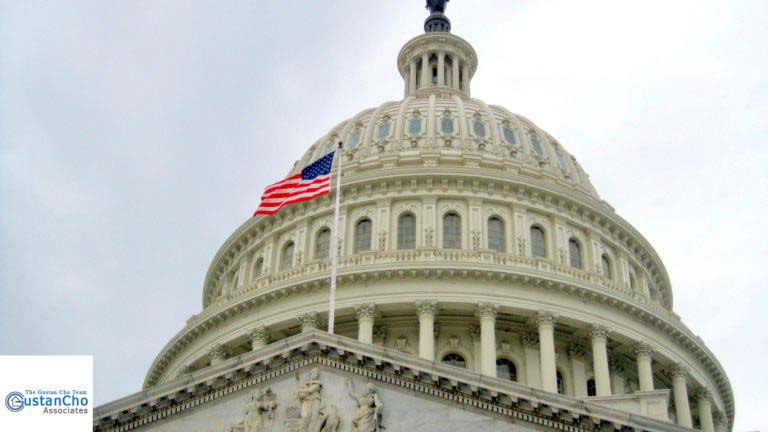This article covers USDA loan guidelines for homebuyers in rural areas. USDA loan guidelines convers the agency guidelines on USDA loans. The United States Department of Agriculture has a guaranteed mortgage loan program that it sponsors. Alex Carlucci, a senior mortgage loan originator at Gustan Cho Associates says the following about USDA loan guidelines for homebuyers in rural areas.
USDA loans are residential mortgage loans that are commonly also known as the USDA Rural Development Guaranteed Housing Loan Program. It is also known as the Section 502 loan which is named after the USDA charter.
Rural Housing Loans, USDA loans, do have specific USDA guidelines and borrowers need to qualify under USDA lending guidelines The property must be in rural areas throughout the country that has been designated and classified rural areas by the U.S. Department of Agriculture. Although USDA loans are for rural areas, there are also thousands of smaller suburban areas throughout the country that also qualify for USDA loan programs. In this blog, we will cover USDA Guidelines on USDA loans for homebuyers in rural areas.
USDA Loan Guidelines and Requirements
USDA loans are extremely popular and sought after by many home buyers due to the USDA loan program’s unique no money down payment and low mortgage rate features. You can purchase a home in a rural area with no money down and no closing costs with a USDA loan. Dale Elenteny, a senior mortgage loan originator at Gustan Cho Associates says the following about USDA loan guidelines for homebuyers in rural areas:
USDA is not a mortgage lender and does not originate nor fund USDA loans. A USDA approved lender will originate and fund the mortgage. The United States Department of Agriculture, USDA, will guarantee the USDA approved lender in the event if the loan defaults against loss.
Since the USDA lender is guaranteed the loss against loss on the USDA loan, the risk to the lender is minimal. With low-risk means, low rates and that is how a home buyer can not just enjoy the perks of 100% financing but also extremely low mortgage rates. Typically, mortgage rates on USDA loans are much lower than any other mortgage loan program including Conventional, FHA, and VA loans.
Zero Down. Big Opportunity. USDA Loans Make It Possible
USDA loans offer 100% financing, flexible credit guidelines, and no mortgage insurance.
USDA Loan Guidelines For Homebuyers in Rural Areas
USDA loans, backed by the United States Department of Agriculture, offer an excellent opportunity for homebuyers in rural and suburban areas to achieve homeownership with affordable financing. These loans are designed to promote economic development in less densely populated regions by providing low—and moderate-income households with access to favorable mortgage terms. This comprehensive guide explores the USDA loan guidelines, eligibility requirements, benefits, and application process to help rural homebuyers make informed decisions.
What Are USDA Loans?
USDA loans, or USDA Rural Development Loans, are government-backed mortgages for homebuyers in rural and select suburban areas. Administered through the USDA’s Rural Development program, these loans have attractive features like no down payment, competitive interest rates, and flexible credit requirements. The primary goal is to make homeownership accessible for individuals and families in areas designated as rural by the USDA.
There are three main types of USDA loans for homebuyers:
- USDA Direct Loans: For low- and very-low-income applicants, funded directly by the USDA.
- USDA Guaranteed Loans: Backed by the USDA but issued by private lenders, suitable for low- to moderate-income borrowers.
- USDA Home Repair Loans and Grants: These are for existing homeowners to repair or improve their homes.
This guide focuses on the USDA Guaranteed Loan program, as it’s the most common option for homebuyers.
Key Benefits of USDA Loans
USDA loans are a popular choice for rural homebuyers due to their unique advantages:
- No Down Payment Required: Unlike conventional loans, USDA loans allow qualified buyers to finance 100% of the home’s purchase price.
- Low Interest Rates: USDA loans often have competitive rates, sometimes lower than FHA or conventional loans.
- Flexible Credit Guidelines: Borrowers with less-than-perfect credit may still qualify, as USDA loans are more lenient than conventional options.
- Low Mortgage Insurance: USDA loans require a guarantee fee (similar to mortgage insurance) but are typically lower than FHA loan premiums.
- Support for Rural Communities: These loans promote homeownership in rural areas, fostering local economic growth.
USDA Loan Guidelines and Eligibility Requirements
To qualify for a USDA loan, homebuyers must meet specific criteria related to income, property location, credit, and more. Below is a detailed breakdown of the eligibility requirements.
Property Eligibility
USDA loans are restricted to homes in areas designated as “rural” by the USDA. However, the definition of rural is broader than many expect, often including suburban areas near cities.
To determine if a property qualifies:
- Check the USDA Property Eligibility Map on the USDA website (ruraldevelopment.usda.gov).
- The home must be a primary residence (no investment properties or second homes).
- The property must meet basic safety and structural standards, similar to FHA or VA loan requirements.
Pro Tip: Even if you’re eyeing a home near a city, check the USDA map, as some areas just outside urban centers may still qualify.
USDA Loan Guidelines on Income Limits
USDA loans are designed for low- to moderate-income households. Income limits vary by location, household size, and local median income.
Key points:
- Your household income must not exceed 115% of the area’s median income.
- Income includes all household members, even those not on the loan.
- Check the USDA Income Eligibility tool online to verify limits for your area.
Example: In a rural county with a median household income of $60,000, a family of four may qualify if their total income is $69,000 or less (115% of $60,000).
USDA Loan Guidelines Credit Requirements
USDA loans are flexible with credit, but lenders typically look for:
- A minimum credit score of 640 for streamlined approval (some lenders may accept lower scores with manual underwriting).
- A clean credit history with no recent bankruptcies, foreclosures, or significant delinquencies.
- Borrowers with limited credit history may still qualify by providing alternative credit references, such as utility or rent payments.
USDA Loan Guidelines on Debt-to-Income Ratio (DTI)
Lenders assess your ability to repay the loan by calculating your DTI ratio:
- Preferred DTI: 41% or lower (total monthly debts divided by gross monthly income).
- Exceptions may be made for borrowers with strong credit or compensating factors, such as savings or stable employment.
Citizenship and Residency
Applicants must be:
- U.S. citizens, U.S. non-citizen nationals, or qualified aliens.
- Able to demonstrate intent to occupy the home as their primary residence.
Employment and Income Stability
Lenders require proof of stable income for at least two years. This can include:
- W-2 income, self-employment income, or other verifiable sources.
- Applicants with gaps in employment may need to provide additional documentation.
USDA Loan Costs and Fees
While USDA loans are cost-effective, there are some fees to consider:
- Upfront Guarantee Fee: Typically 1% of the loan amount, which can be rolled into the loan.
- Annual Fee: A small percentage (usually 0.35%) of the remaining loan balance, paid monthly.
- Closing Costs: Like other mortgages, closing costs may include appraisal, title, and lender fees.
- Some closing costs can be financed or covered by seller concessions.
Example: For a $200,000 loan, the upfront guarantee fee would be $2,000, which can be added to the loan balance, and the annual fee would be approximately $58 per month in the first year.
Buy Your Dream Home in the Country with No Money Down
USDA loans are designed for homebuyers in rural areas with limited income. Get approved today and move into your ideal home with $0 down.
How to Apply for a USDA Loan
Follow these steps to apply for a USDA loan:
- Check Property and Income Eligibility: Use the USDA’s online tools to confirm the property is in an eligible area and your income meets the limits.
- Find a USDA-Approved Lender: Not all lenders offer USDA loans, so work with one approved by the USDA.
- Get Pre-Approved: Submit financial documents (pay stubs, tax returns, bank statements) to get pre-approved and determine your budget.
- Find a Home: Work with a real estate agent familiar with USDA loans to find an eligible property.
- Submit a Loan Application: Provide all required documentation, including proof of income, credit history, and property details.
- Appraisal and Underwriting: The lender and USDA will review the application and appraise the property to ensure it meets guidelines.
- Close the Loan: Sign the final paperwork, pay closing costs, and receive the keys to your new home.
Tips for Success with USDA Loans
- Improve Your Credit: Pay down debts and avoid new credit inquiries before applying.
- Work with an Experienced Lender: Choose a lender familiar with USDA loans to streamline the process.
- Explore Down Payment Assistance: Some states offer additional programs to cover closing costs or fees.
- Be Patient: USDA loans may take longer to process due to government backing and rural property appraisals.
Common Myths About USDA Loans
Myth 1: USDA loans are only for farmers.
- Fact: USDA loans are for anyone purchasing a home in an eligible rural or suburban area, regardless of occupation.
Myth 2: You need perfect credit to qualify.
- Fact: USDA loans are designed for borrowers with moderate credit, and scores as low as 580 may qualify with manual underwriting.
Myth 3: Only remote areas qualify.
- Fact: Many suburban areas near cities meet the USDA’s rural definition.
Why Choose a USDA Loan?
USDA loans are an excellent option for rural homebuyers seeking affordable financing. With no down payment, competitive rates, and flexible credit requirements, they make homeownership accessible for low- to moderate-income families. By understanding the guidelines and working with an experienced lender, you can navigate the process and secure your dream home in a rural community.
USDA Loan Guidelines on Mortgage Insurance
USDA loans require both upfront mortgage insurance premium as well as annual mortgage insurance premium. The upfront and annual USDA mortgage insurance premium has last been updated and remains unchanged as of today. USDA loan upfront mortgage insurance premium is 2.0% which can be rolled into the balance of the USDA loan. There is also a 0.40% annual mortgage insurance premium that needs to be paid every year.
USDA Loan Guidelines On USDA Loan Limits
To be eligible for a USDA loan, the property needs to be in a designated region and the homebuyer needs to meet USDA mortgage guidelines.As mentioned above, USDA allows a home buyer to get a USDA loan with 100% financing:
- The upfront mortgage insurance premium can be added to the balance of the USDA loan.
- Closing costs can be avoided by getting a sellers concession towards a home buyer’s closing costs or by a lender’s credit.
One of the setbacks with USDA loan programs is that the household income of the home buyer cannot exceed the maximum income limits of a particular area that the property is located. USDA mission and goal is just to promote homeownership for home buyers with modest income and means and not those who have higher incomes. Marga Jurilla, the executive assistant for Gustan Cho says the following about USDA loan guidelines for homebuyers in rural areas:
To meet USDA loan income guidelines, the buyer’s household annual income cannot exceed the median household income for that particular region.
Or county by more than 15% with allowances adjusted for the size of the home buyer’s household. The more members a household has, the more income is allowed. For example, the income threshold for a 10 member household is much higher than those of a 3 member household.
- Households with one to four members in households are $82,700
- Households for five to eight member households is $109,150
The income limits for USDA loan income calculations are different depending on the state and the regions. High-cost areas such as California where it is one of the most expensive areas and has a high cost of living. An average of 8% to each household member can be used as a standard adjustment income increase for households greater than 4 members in their household.
Ready to Get Started?
Check your eligibility on the USDA website, connect with a USDA-approved lender, and take the first step toward homeownership today.
For more information, visit ruraldevelopment.usda.gov.
Related> How do I qualify for a USDA loan?
Don’t Let a Down Payment Hold You Back—USDA Can Help
Homebuyers in rural areas can take advantage of no money down, low rates, and easy approval guidelines.








